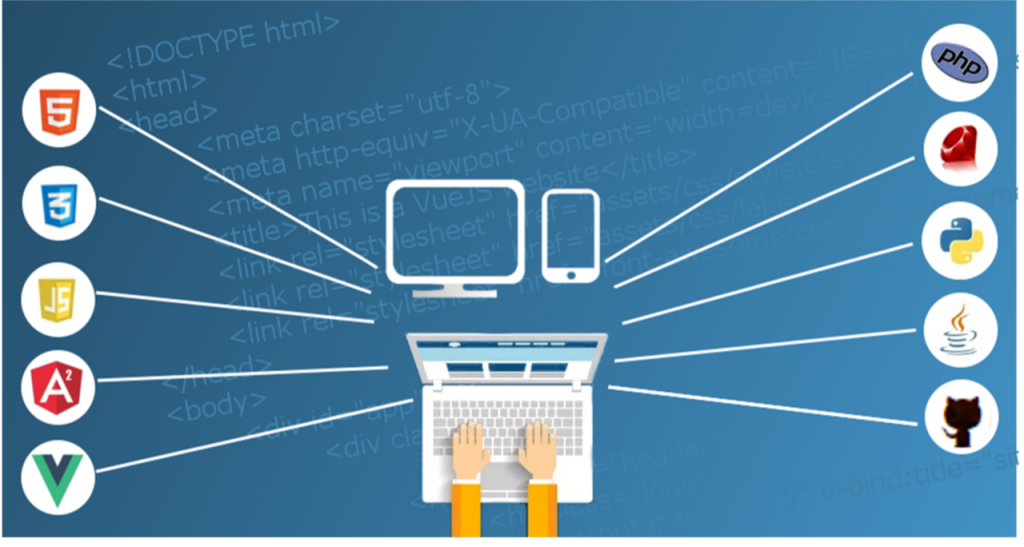Overview
As of 2023, there are numerous web frameworks available for building web applications, each with its own unique set of features, advantages, and disadvantages. In this article, we will discuss the top web frameworks of 2023 and their key features.
1. React
React is a JavaScript library for building user interfaces. It was created by Facebook and has gained widespread popularity among developers due to its high performance, modular architecture, and extensive community support. React uses a virtual DOM (Document Object Model) to optimize rendering performance, making it ideal for large-scale applications with frequent updates.
React is highly customizable and can be used with other libraries and frameworks, making it a popular choice for building web applications. It also provides extensive documentation and developer tools, making it easier for developers to get started with React and build complex applications.
2. Angular
Angular is a comprehensive web framework for building complex, dynamic web applications. It was created by Google and has been widely adopted due to its powerful features and ease of use. Angular uses TypeScript, a superset of JavaScript that adds features like static typing and class-based object orientation, to provide better code organization and error checking.
Angular provides built-in support for features like data binding, dependency injection, and component-based architecture, making it easier for developers to build complex applications. It also has a large and active community that provides extensive documentation and developer tools.
3. Vue.js
Vue.js is a progressive web framework for building user interfaces. It was created by Evan You and has gained popularity among developers due to its simplicity, flexibility, and ease of use. Vue.js uses a component-based architecture and provides built-in support for features like data binding, event handling, and computed properties.
Vue.js also provides extensive documentation and developer tools, making it easier for developers to get started with the framework and build complex applications. It can also be used with other libraries and frameworks, making it a flexible choice for building web applications.
4. Django
Django is a web framework for building web applications in Python. It was created by Adrian Holovaty and Simon Willison and has gained popularity due to its simplicity, security, and rapid development capabilities. Django provides built-in support for features like URL routing, form handling, and authentication, making it easier for developers to build complex applications.
Django also provides extensive documentation and developer tools, making it easier for developers to get started with the framework and build complex applications. It also has a large and active community that provides support and resources to developers.
5. Ruby on Rails
Ruby on Rails is a web framework for building web applications in Ruby. It was created by David Heinemeier Hansson and has gained popularity due to its simplicity, flexibility, and rapid development capabilities. Ruby on Rails provides built-in support for features like database migrations, asset management, and authentication, making it easier for developers to build complex applications.
Ruby on Rails also provides extensive documentation and developer tools, making it easier for developers to get started with the framework and build complex applications. It also has a large and active community that provides support and resources to developers.
6. Flask
Flask is a micro web framework for building web applications in Python. It was created by Armin Ronacher and has gained popularity due to its simplicity, flexibility, and ease of use. Flask provides built-in support for features like URL routing, template rendering, and session management, making it easier for developers to build complex applications.
Flask also provides extensive documentation and developer tools, making it easier for developers to get started with the framework and build complex applications. It can also be used with other libraries and frameworks, making it a flexible choice for building web applications.
Conclusion
In conclusion, the top web frameworks of 2023 provide developers with a range of powerful features and capabilities for building complex web applications. Each of these frameworks has its own unique set of features and advantages, making them suitable for different types of web applications and development projects. As a developer, it is important to choose the right web framework based on your project requirements, team expertise, and development goals.
Overall, the top web frameworks of 2023 provide developers with powerful tools and resources for building high-quality, performant web applications. With the help of these frameworks, developers can build complex applications faster, with less code, and with a lower risk of errors and security vulnerabilities.

